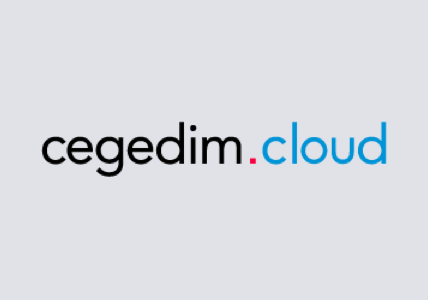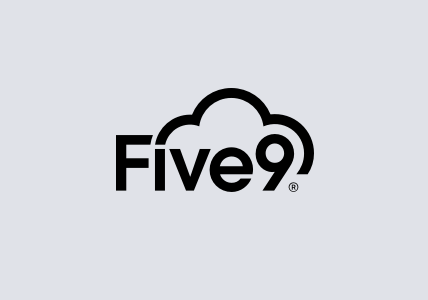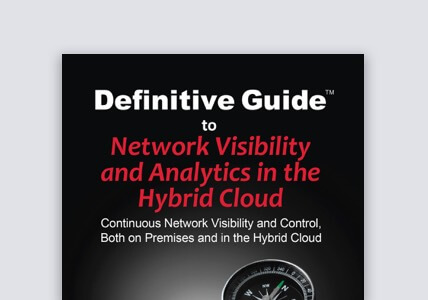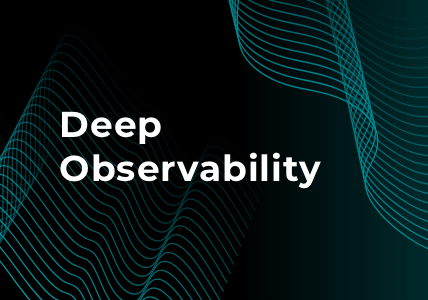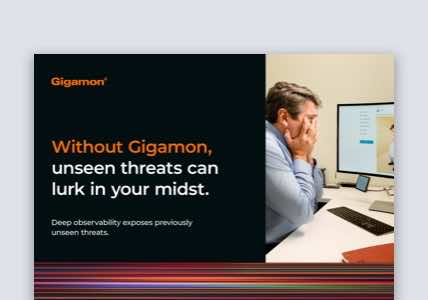Revisiting Threat Models in the Cloud Era: A Webinar Series from ESG and Gigamon
At Gigamon, we have the privilege of regular discussions with our customers about their strategic plans and challenges. From that, I can confidently say that 100 percent of our customers have a cloud-first strategy today, and 100 percent expect to remain in the hybrid cloud world for the foreseeable future.
This reality leads to a gap that forces organizations to evolve their cybersecurity programs for the hybrid cloud era. Understanding the risk introduced by moving workloads to the cloud is critical to their security program maturity.
In partnership with ESG Senior Analyst Doug Cahill, we’ve produced a three-part webinar series to provide you with a set of best practices by studying the mechanics of cloud adoption, outlining how ransomware continues to change, and emphasizing the need for a Zero Trust strategy to protect your cloud footprint.
Episode 1 – Cloud Migration: Who Is Responsible for Securing the Network?
Watch on demand
Fingers crossed, life is starting to get back to normal, and the winning streak cloud-based services saw because of the pandemic shows no sign of slowing down as businesses move to embrace hybrid and “work from anywhere” models.
Yet despite the numerous benefits of the rapid migration to cloud — like collaboration where previously there were silos ranking near the top — the stark reality is that cybersecurity for the cloud era is facing a readiness gap.
In fact, a recent ESG survey found that despite the benefits of cloud migration and adoption, 88 percent of enterprise respondents believe that their cybersecurity initiatives need to evolve in order to secure their cloud-native applications and use of public clouds.
Eighty-seven percent of respondents also fear that the differences between cloud-native applications and the rest of their apps and infrastructure require a different set of security policies and technologies. As such, there are a lot of questions and confusion for CISOs and IT leaders about exactly who is responsible for securing the network.
In a bid to provide clarity, in Episode 1 of “Revisiting Threat Models in the Cloud Era,” Doug Cahill, Senior Analyst at ESG, explores the dynamics of cloud migration and why the shared responsibility model is foundational to cloud security.
You will learn:
- What security trends analysts from ESG are seeing around SaaS, IaaS, and PaaS
- What the shared responsibility model is and why there’s confusion around what it means for CISOs
- Why organizations must gain greater insight into the “cloud security visibility gap”
- The role of developers in the threat model and how they can help
Episode 2 – The Rise of Ransomware: Planning for When, Not If
Watch on demand
Think your backups are a panacea for ransomware defense? Think again. Traditional backups are no longer enough. Despite the fact that ransomware has been a popular business model for cybercriminals for years, it’s gaining relevance with supply chain attacks, and big game hunting — attacks on enterprises — is on the rise.
Graff, JBS, Colonial Pipeline, and software manager Kaseya are just some of the businesses held to ransom recently. With Colonial paying $4.4 million and JBS $11 million (WSJ), it’s more essential than ever that CISOs are clued up on the latest in threat intelligence. Enterprise ransomware attacks are becoming more targeted and less “spray and pray.”
This rise of ransomware is coupled with the shift from remote to hybrid working, which has seen both the number of remote endpoints and amount of intruder attack space increasing exponentially. It’s the perfect storm, and organizations must know how to effectively battle ransomware by planning ahead and preparing for the inevitable. In Episode 2 of “Revisiting Threat Models in the Cloud Era,” Doug Cahill, Senior Analyst at ESG, shares his expert opinion on exactly how to do that.
Make sure you tune in and learn:
- New insights into the shift to enterprises being attack targets and why
- Why ransoms have increased and what the role and relevance of cybersecurity insurance is
- Essential information about the threat actors themselves and how have they changed their approach to monetizing extortion
- Specific best practices for ransomware cybersecurity that businesses must implement
Episode 3 – Zero Trust for the Cloud Era: New Use Case Insights
Watch on demand
Zero Trust is increasingly a guiding principle for modern cybersecurity programs. With an ESG survey finding that for 51 percent of enterprise respondents it’s the top driver of adopting zero trust — ahead of reducing the number of cybersecurity incidents and supporting digital transformation — there’s no denying that Zero Trust is now central to cybersecurity modernization.
You may ask: Weren’t organizations starting to implement Zero Trust before the pandemic? While that’s certainly true, the leap in adoption of cloud services since March 2020, and the increased dependency on cloud infrastructure, has undoubtedly changed the game. As a result, it’s time to both reexamine Zero Trust’s applicability for securing growing cloud footprints and increase your knowledge of new Zero Trust use cases.
In Episode 3 of “Revisiting Threat Models in the Cloud Era,” Doug Cahill, Senior Analyst at ESG, teaches organizations how to apply Zero Trust in new cloud infrastructures and why it’s so critical today.
- What ESG’s definition of Zero Trust is
- What the scope of Zero Trust is and essential Zero Trust use cases
- How Zero Trust is different from default deny and the way enterprises have treated access previously
- If Zero Trust network architecture is replacing VPNs
- What the role of monitoring in a Zero Trust approach is
I am positive you will find these three episodes interesting, educational, and actionable in your efforts to better secure your hybrid cloud workloads.
Featured Webinars
Hear from our experts on the latest trends and best practices to optimize your network visibility and analysis.

CONTINUE THE DISCUSSION
People are talking about this in the Gigamon Community’s Hybrid/Public Cloud group.
Share your thoughts today
